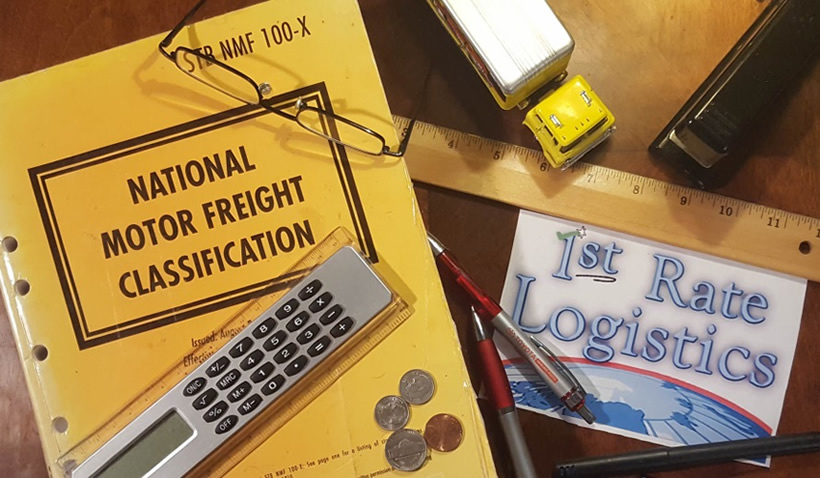Shipping Guide
as presented by
First Rate Logistics

Table of Contents
I: Introduction

So, after just discovering this Shipping Guide, you may not have shipped on a freight truck before and can benefit from some fundamental information about how the freight industry works. This guide will cover all of the cornerstones on how to ship via land, ocean, and air and map out the route to an expedient shipping experience. Keep in mind that this isn’t about parcel shipping (less than about 100 pounds in total commodity weight - something that fits in a box or two). This guide is directed towards shipping pallets, crates, and big trucks carrying BIG things. Shipping in the freight industry is a highly detail-oriented endeavor, and it is important to know how to connect your merchandise to your customers, the logistics of loading, and how to lower the overall cost per unit.
Let us help you become a freight pro!
II: Glossary of Essential Terms
- accessorial – special services fee
- B.O.L. – bill of lading
- consignee – the destination ⁄ receiving party where the freight is delivering
- density – weight amount of space a unit occupies, denoted in pounds per cubic foot (P.C.F.)
- dimensions – measurements of freight (length X width X height)
- F.T.L. – full truckload
- freight class – rating system assigned to L.T.L. items based upon density or commodity type
- handling unit – a forklift-ready platform or container for which items are prepared for shipping
- L.T.L. – less than truckload
- L.C.L. – less than containerized load (in reference to ocean or international shipping)
- lift gate – hydraulic platform used for loading ⁄ unloading, often for residential deliveries
- P.C.F. – pounds per cubic foot
- pallet jack – similar to a hand truck, a wheeled cart tool used to move pallets and crates
- shipper – the party to the shipment from where the freight gets loaded; its origin
- trailer – the carriage that is attached to the truck
- 3.P.L. – third party logistics company ⁄ freight brokerage
III: Determining the Trailer Type
There may be vehicle and trailer requirements depending on the weight and dimensions of the commodity to be transported. Trailers are attached to the truck itself and vary in design and purpose in order to accommodate specific sizes and needs of loads. You are already familiar with a couple of the following trailer types as you pass them on the roadways, so we’ll try to keep it concise in describing them:
IV: Getting Ready to Ship
daf aiuewfaiw giuaw urgaoiuiurgaoir ug arg a uer oaergu erag ouyer ogouyraeoger g